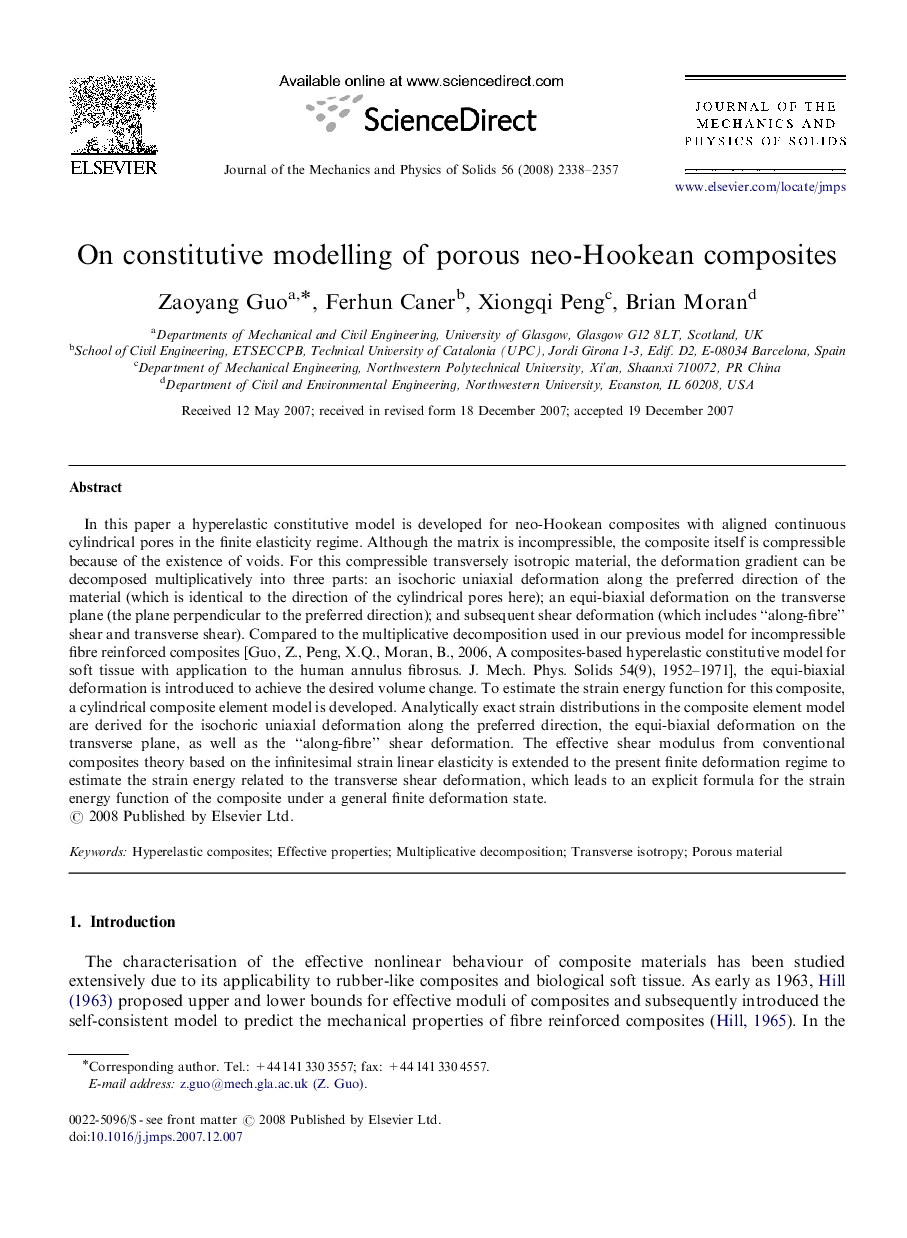| Article ID | Journal | Published Year | Pages | File Type |
|---|---|---|---|---|
| 797439 | Journal of the Mechanics and Physics of Solids | 2008 | 20 Pages |
In this paper a hyperelastic constitutive model is developed for neo-Hookean composites with aligned continuous cylindrical pores in the finite elasticity regime. Although the matrix is incompressible, the composite itself is compressible because of the existence of voids. For this compressible transversely isotropic material, the deformation gradient can be decomposed multiplicatively into three parts: an isochoric uniaxial deformation along the preferred direction of the material (which is identical to the direction of the cylindrical pores here); an equi-biaxial deformation on the transverse plane (the plane perpendicular to the preferred direction); and subsequent shear deformation (which includes “along-fibre” shear and transverse shear). Compared to the multiplicative decomposition used in our previous model for incompressible fibre reinforced composites [Guo, Z., Peng, X.Q., Moran, B., 2006, A composites-based hyperelastic constitutive model for soft tissue with application to the human annulus fibrosus. J. Mech. Phys. Solids 54(9), 1952–1971], the equi-biaxial deformation is introduced to achieve the desired volume change. To estimate the strain energy function for this composite, a cylindrical composite element model is developed. Analytically exact strain distributions in the composite element model are derived for the isochoric uniaxial deformation along the preferred direction, the equi-biaxial deformation on the transverse plane, as well as the “along-fibre” shear deformation. The effective shear modulus from conventional composites theory based on the infinitesimal strain linear elasticity is extended to the present finite deformation regime to estimate the strain energy related to the transverse shear deformation, which leads to an explicit formula for the strain energy function of the composite under a general finite deformation state.
